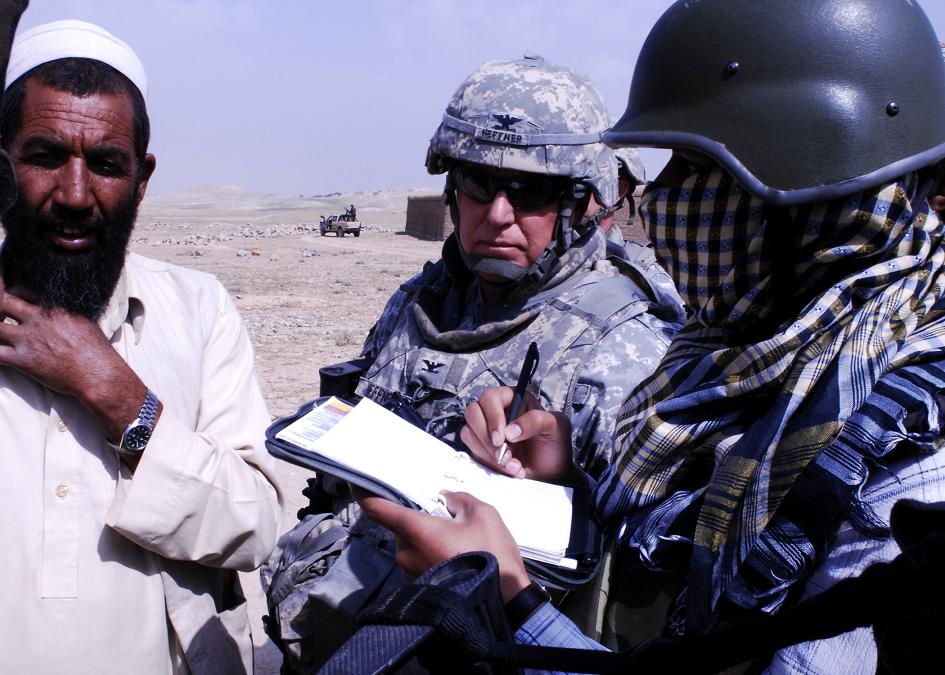
NATO Training Policies in Afghanistan Spur “Af-Fragging” Incidents
Half-hearted training efforts increase risks to Western forces
Reading time: (Number of words: )
A person does not shoot their friends. It is that simple. The recent dramatic increase in Afghan military and security personnel firing on American, British, Australian and other NATO trainers should be cause for alarm. That alarm should be causing NATO officials to rethink their unprofessional and half-hearted training efforts, as those efforts are aggravating tensions and increasing risks to their own forces. The problem is that bureaucracies are loath to admit mistakes, especially fundamental errors, so the fragging incidents are likely to continue and even increase.
According to author Peter Brush, the term “fragging” was coined in January 1971 by Washington Post columnist Chalmers Roberts. Fragging incidents arose when frustrated U.S. troops in Vietnam began attacking their own officers with fragmentation grenades. According to Brush, there were 209 such attacks by U.S. Army personnel in just one year, 1970. From 1970 to mid-1972 the U.S. Army reported 551 fragging incidents, which killed 86 military members and wounded more than 700. The attacks were linked to a dangerous decline in morale and discipline due to a losing war effort. There are clear parallels between Vietnam in the 1970’s and Afghanistan today.
The U.S. and NATO training missions in Afghanistan have long been a side-show and a low priority. Originally, the efforts were contracted out to politically-connected consulting companies which were not equipped for the task. Then the mission was assigned to the U.S. National Guard because the regular Army looked down on the training mission. For over a decade the training effort was underfunded and understaffed. Today, most trainers still lack fluency in Dari and Pashto, so they must rely on interpreters. A trainer cannot bond with his recruits through an interpreter. The U.S. and NATO have consistently refused to fund a comprehensive Dari/Pashto language program for their trainers. All personnel should have a least one year of immersion language training prior to being deployed to Afghanistan.
In addition to the language and communications gaps, the rush to build an Afghan military, after a decade of neglect, is ill-advised. Quantity does not trump quality. There are reports that Iranian Qods personnel are training Taliban recruits on a one-to-one basis, while each NATO trainer may be training more than 100 recruits. The Iranian efforts instill trust and build friendships, while the NATO efforts remain impersonal and distant. In summary, the NATO training policies and practices are careless and unprofessional. To build an army from scratch from a pool of disparate religious, ethnic and tribal groups requires slow and careful efforts by trainers who can directly bond with their trainees. It requires small training groups overseen by a corps of language-fluent trainers, deployed for multi-year tours. Instead, the current NATO and Pentagon policy could best be summed up as, “do it fast and do it cheap.”
These Afghan attacks will undoubtedly result in their own unique descriptive term, perhaps “Af-Fragging, or each attack merely being called an Af-Frag.” The attacks are symptom of a very serious problem. That cannot be white-washed away as “progress” or simply another “challenge.” Boasts that these attacks will not sway NATO, are not helpful. In fact, the attacks should be swaying NATO into a major reform of its training program, policies and procedures. A military does not send its troops into a situation for which they are not properly prepared, trained and equipped. The NATO trainers deserve better from their governments.
Photo Credit:
New York Army National Guard Col. Mark Heffner, center, speaks with Khvajeh Ghar Village elder Khan Mohamed, far left, about possible assistance the civil affairs team out of Camp Alamo and the Training Assistance Group can offer. At right, an Afghan interpreter helps bridge the language barrier between the two. Heffner is the TAG commander. (Photo courtesy MPRI/G. A. Volb)











